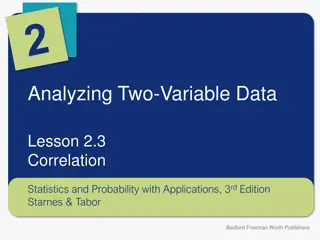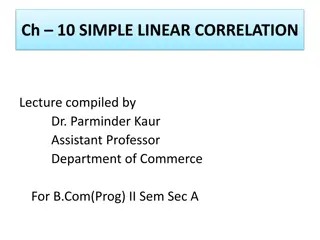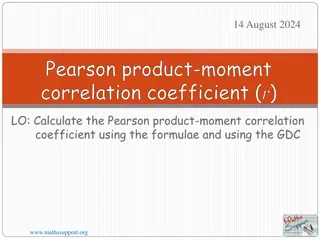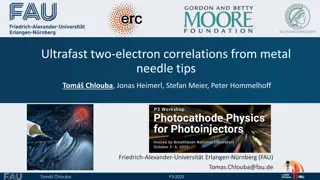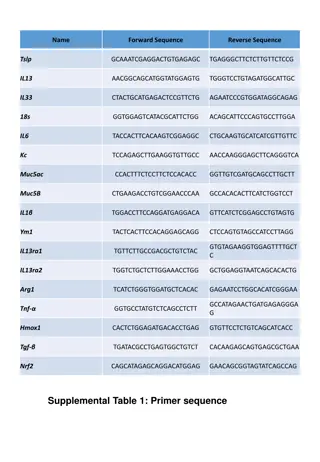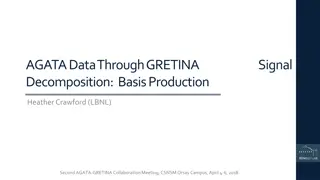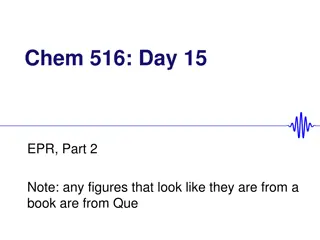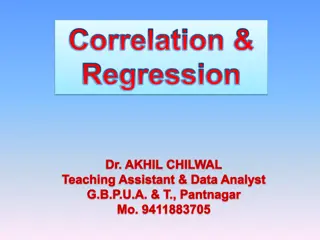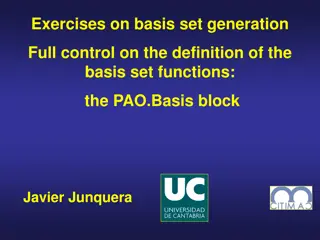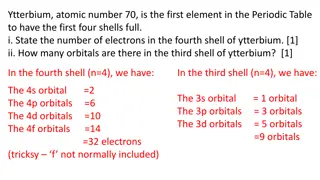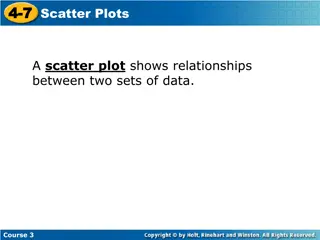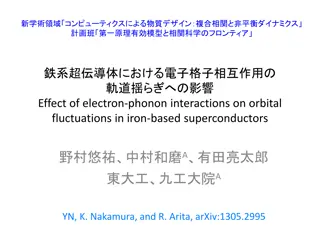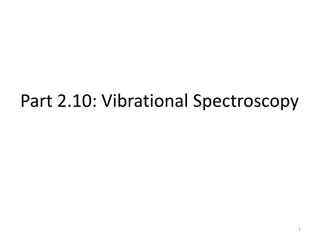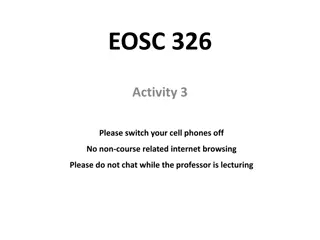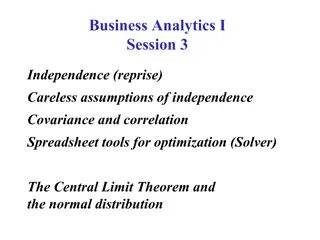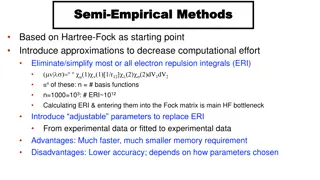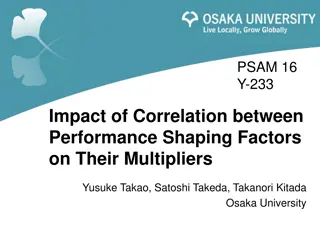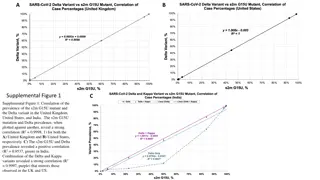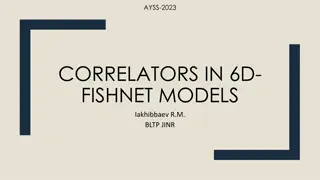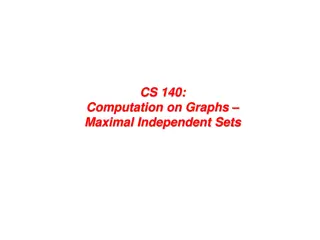Understanding Electron Correlation and Basis Sets in Molecular Calculations
Polarized basis sets describe the electron density polarization in atoms and molecules to improve accuracy in computed geometries and frequencies. Diffuse basis sets are recommended for calculating electron and proton affinities. Electron correlations account for electron interactions in molecular calculations, with methods like Configuration Interaction and Density Functional Theory utilized for accurate results.
Download Presentation

Please find below an Image/Link to download the presentation.
The content on the website is provided AS IS for your information and personal use only. It may not be sold, licensed, or shared on other websites without obtaining consent from the author. Download presentation by click this link. If you encounter any issues during the download, it is possible that the publisher has removed the file from their server.
E N D
Presentation Transcript
Polarized Basis Sets Polarized Basis Sets
3 3- -Polarized Basis Sets Polarized Basis Sets are added to describe polarization of the electron density of the atom in molecules these are called polarization functions ,and because they give the wave function more flexibility to change shape and decrease the variation total energy . Polarization functions are used because they often result in more accurate computed geometries and vibration frequencies. Polarized Basis Sets
Such as : 6 6- -31 (d) primitives has been added to atoms other than hydrogen, polarization functions on heavy atoms. 6 6- -31 ,p) primitives has been added to hydrogen as well ,and polarization functions on heavy atoms and hydrogen. 31G* G* : A single asterisk mean that asset of 31G** G**: two asterisk mean that a set of (d
. 4 4- -Diffuse Basis Sets Diffuse Basis Sets are recommended for calculation of electrons affinities , proton affinities, . Such as: 3 3- -21 3 3- -21 hydrogen. 3 3- -21 heavy atoms. 3 3- -21 and hydrogen , as well as diffuse functions on heavy atoms . Diffuse basis functions important for describing anions or dipole moments. Diffuse Basis Sets 21+ +G G : diffuse functions on heavy atoms. 21++ ++G G : diffuse functions on heavy atoms and 21+ +G* G* : polarization and diffuse functions on 21+ +G** G**: polarization functions on heavy atoms
Electron Correlations A Hartree fock SCF wave function takes into account the interactions between electrons only in an average way . We must consider the instantaneous interactions between electrons since electrons repel each other they tend to keep out of each other's way . This is region in which the probability of finding another electron is small. The motions of electrons are correlated with each other. The correlation energy the exact nonrelativistic energy ( E nonrel.) and the Hartree- fock energy ( EHF) E E corr. Where ( E nonrel.) and ( EHF) should both either include corrections for nuclear motion . Electron Correlations The correlation energy : is the difference between corr.= = E E nonrel nonrel- - E E HF HF
There are general types of electron correlation: 1-Configuration Interaction (CI) . 2-Moller- Plesset perturbation (MP) 3-Denisty functional theory (DFT)
Moller Moller- Plesset perturbation theory assumes that the effects of electron correlation are minor and can be described by small corrections to the (HF) solution. MP methods assume that true Molecular Hamiltonian can be divided into two parts . P^ many- -e e- - Where : H^ one-e-single electron energy contributions that can be solved by HF SCF and P many-e- represents contributions due to electron correlation. = The coefficient is used to generate power series expansions of the energy MP- theory can directly be applied only to unrestricted Hartree- fock reference functions for open- shell molecules ( UHF). Moller- - Plesset Plesset perturbation ( perturbation (MP) MP) H ^ mol H ^ mol= = H^ H^one one- -e e- -+ + P^ many
Semi- empirical Methods quantum chemistry methods are based on the Hartree- fock method. Because of the difficulties in applying Ab-initio methods to medium and large molecules many Semi-empirical methods were developed to treat such molecules . The earliest Semi- empirical treated only the electrons of conjugated molecules. The Semi-empirical MO method apply to all Molecules and treat all the valence electrons. Semi- empirical MO theories fall into two categories: Those using a Hamiltonian that is the sum of one electron two electron The Huckel Method is a one electron theory, whereas the Parise- Parr- Pople method is a two electron Theory. one electron terms and those using a Hamiltonian that includes two electron repulsion terms as well as one electron terms.



